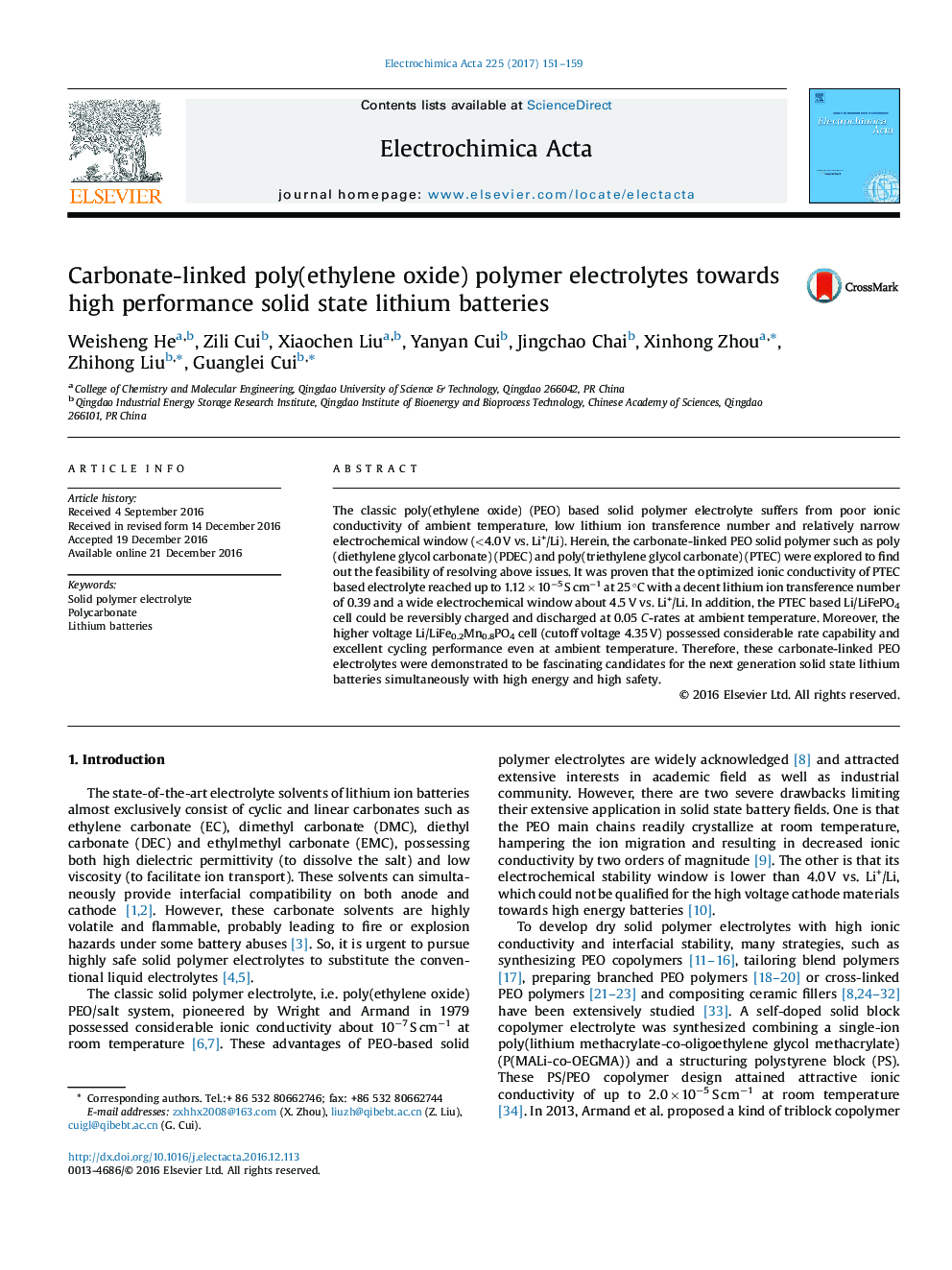| Article ID | Journal | Published Year | Pages | File Type |
|---|---|---|---|---|
| 4767356 | Electrochimica Acta | 2017 | 9 Pages |
The classic poly(ethylene oxide) (PEO) based solid polymer electrolyte suffers from poor ionic conductivity of ambient temperature, low lithium ion transference number and relatively narrow electrochemical window (<4.0 V vs. Li+/Li). Herein, the carbonate-linked PEO solid polymer such as poly(diethylene glycol carbonate) (PDEC) and poly(triethylene glycol carbonate) (PTEC) were explored to find out the feasibility of resolving above issues. It was proven that the optimized ionic conductivity of PTEC based electrolyte reached up to 1.12 Ã 10â5 S cmâ1 at 25 °C with a decent lithium ion transference number of 0.39 and a wide electrochemical window about 4.5 V vs. Li+/Li. In addition, the PTEC based Li/LiFePO4 cell could be reversibly charged and discharged at 0.05 C-rates at ambient temperature. Moreover, the higher voltage Li/LiFe0.2Mn0.8PO4 cell (cutoff voltage 4.35 V) possessed considerable rate capability and excellent cycling performance even at ambient temperature. Therefore, these carbonate-linked PEO electrolytes were demonstrated to be fascinating candidates for the next generation solid state lithium batteries simultaneously with high energy and high safety.
Graphical abstractDownload high-res image (167KB)Download full-size image
